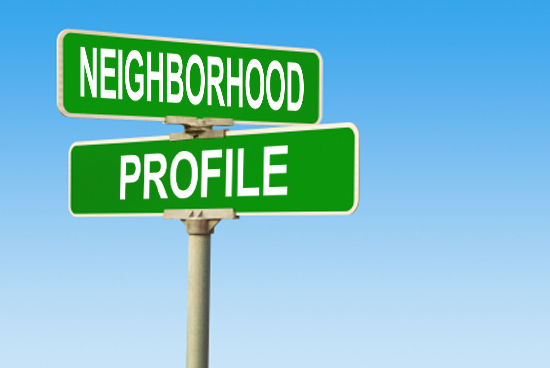As soon as you enter Albemarle Park, you know that you are in a special place. It’s not like any other neighborhood in Asheville. It’s more than an interesting neighborhood of curving streets, towering trees and old houses. It is a nationally recognized landmark in residential design, a rare surviving example of late 19th century “resort park” development.
Made up of 42 primary structures that were carefully sited on the western slope of Sunset Mountain to allow for shared panoramic views, Albemarle Park feels as if it is someplace far outside the city, even though the neighborhood is just east of the Charlotte Street business district and only a 15 minute walk to downtown Asheville.
Albemarle Park is a landmark in residential planning, architecture and landscape design that has been recognized to be of national significance. It is the result of a special collaboration of three prominent men during the 1890s: William Green Raoul, a prominent railroad executive, Bradford Lee Gilbert, renowned architect, and Samuel Parsons Jr., an important landscape architect, both from New York City.
In 1886, William Green Raoul purchased the 35-acre R.W. Deaver farm with the intention of building a summer place for his family. By 1897, he had decided to develop the property into a “residential park” with an English inn, housekeeping cottages and private residences. With his son Thomas Wadley Raoul as foreman, the Albemarle Park Co. was formed and the vision for Albemarle Park began to take shape. Parsons sited the inn and the cottages so that full advantage could be taken of the mountain views. His planting plan emphasized the special quality of the natural landscape and the importance of “shared viewscapes.” Gilbert designed unique homes for the sites of varying architectural styles and excellent craftsmanship.
The Lodge, known also as The Gatehouse, on Charlotte Street was the first building, built in 1897, and served as Thomas Wadley Raoul’s residence and office for Albemarle Park. The Manor Inn was the centerpiece and was opened on New Year’s Day 1899.
By 1913, 24 significant structures had been built by the Albemarle Park Company: The Lodge in 1897; The Manor Inn, Clover, Columbus, Milfoil, and Shamrock Cottages in 1898; Orchard Cottage in 1899; Clematis Cottage (presently called Laurel) in 1901; Clio and Galax Cottages in 1902; Cherokee Cottage and The Clubhouse in 1903; Rosebank Cottage in 1905; Manzanita, Crow’s Nest, Dahlia, Daffodil, and Larkspur Cottages in 1906; Hollyhock and Marigold Cottages in 1907; Dogwood and Kalmia Cottages in 1910; and Fox Hall and Fox Den by 1913. During this time there were also five other cottages built as private homes by owners of empty lots purchased from Albemarle Park Co. These five were: Alva Glen, Brown Bear, Wildfell, Possum Trot and Breezemont.
After the death of Mr. Raoul, E.W. Grove purchased the land to add to his other holdings in the area. Additional cottages, private residences and accessory buildings continued to be built up into the 1950s. Through the years the cottages became year-round homes and the one-time vacation resort grew into a residential neighborhood.
Albemarle Park is unique among Asheville’s local historic districts. Every single one of its significant structures is still intact and relatively unchanged today. Albemarle Park property owners are currently installing historic reproduction street lamps throughout the neighborhood at their own cost. Approximately two-thirds have been installed so far and we hope to have the remaining lamps installed within the next few years. As a local historic district, its property owners are responsible for maintaining the historic integrity and character of the homes and landscape for all of Asheville, its visitors and future generations to enjoy.
The neighborhood is a sociable group with many community events including an annual Easter egg hunt and Fourth of July parade. The neighborhood kicks off summer with a kickball game in the park and residents throw porch parties throughout the warm months. They share bowls of chili in the park in the fall and celebrate the holiday season together with a progressive dinner party that always ends with dessert at the Manor.
For more information, contact Amy Hornaday, Neighborhood Association President at amy@hornadaydesign.com.
Neighborhood Profile – Albemarle Park
